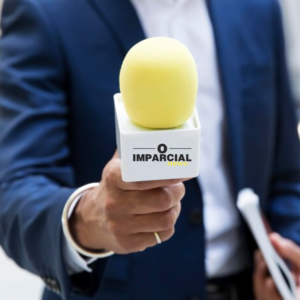For example, a bond issued at par (“100”) could come with an initial call price of 104, which decreases each period after that. The inclusion of the call premium is meant to compensate the bondholder for potentially lost interest and reinvestment risk. If callable, the issuer has the right to call the bond at specified times (i.e. “callable dates”) from the bondholder for a specified price (i.e. “call prices”). A Callable Bond contains an embedded call provision, in which the issuer can redeem a portion (or all) of the bonds prior to the stated maturity date. There are two basic ways to trade call options, a long call option and a short call option.
You would be paid $650 over the face value of the stock because the investment you’ve made is essentially being repaid early. For example, suppose Company ABC issued some 10-year bonds providing a 4% interest rate. The company can choose to redeem the bonds that were issued at 4% and then issue new ones at the lower rate of 3%.
This is because investors are losing out on the interest that they would have been paid if they had held the bond for the entire time for which it was originally issued. A call premium refers to the amount above par value an investor receives when the debt issuer redeems the security earlier than its maturity date. If a security is redeemed before it reaches maturity, allocative efficiency the owner of the security loses the incremental profits that would’ve been generated. In this example, the call premium for the callable bonds issued by ABC Corporation is 5% of the face value.
You’re our first priority.Every time.
Depending on the terms of the bond agreement, the call premium gradually declines as the current date approaches the maturity date. Investors will consider buying call options if they are optimistic—or “bullish”—about the prospects of its underlying shares. For these investors, call options might provide a more attractive way to speculate on a company’s prospects because of the leverage they provide.
When the option is in the money or above the breakeven point, the option value or upside is unlimited because the stock price could continue to climb. Buying and selling call options can also be used as part of more complex option strategies. For this option to buy the stock, the call buyer pays a “premium” per share to the call seller. Options are a type of financial instrument known as a derivative because their value is derived from another security, or underlying asset. Here we discuss stock options, where the underlying asset is a stock. Finally, don’t get confused by the term “escrow to maturity.” This is not a guarantee that the bond will not be redeemed early.
While only some bonds are at risk of being called, your overall portfolio remains stable. Before buying a callable bond, it’s also important to make sure that it, in fact, offers a higher potential yield. Find bonds that are non-callable and compare their yields to callable ones. However, locating bonds without call features might not be easy, as the vast majority tend to be callable. Bondholders will receive a notice from the issuer informing them of the call, followed by the return of their principal. In some cases, issuers soften the loss of income from the call by calling the issue at a premium, such as $105.
Here’s What Happens When a Bond Is Called
This means there’s a period during which the bond cannot be called, allowing you to enjoy the coupons regardless of interest rate movements. Let’s look at an example to see how a call provision can cause a loss. Say you are considering a 20-year bond, with a $1,000 face value, which was issued seven years ago and has a 10% coupon rate with a call provision in the tenth year. At the same time, because of dropping interest rates, a bond of similar quality that is just coming on the market may pay only 5% a year. You decide to buy the higher-yielding bond at a $1,200 purchase price (the premium is a result of the higher yield). Since call features are considered a disadvantage to the investor, callable bonds with longer maturities usually pay a rate at least a quarter-point higher than comparable non-callable issues.
What is a Call Premium?
Thus, the payoff when ABC’s share price increases in value is unlimited. Call options with a $50 strike price are available for a $5 premium and expire in six months. Each options contract represents 100 shares, so 1 call contract costs $500. The investor has $500 in cash, which would allow either the purchase of one call contract or 10 shares of the $50 stock.
If the stock trades below the strike price, the call is “out of the money” and the option expires worthless. Then the call seller keeps the premium paid for the call while the buyer loses the entire investment. For a call buyer, if the market price of the underlying stock price moves in your favor, you can choose to “exercise” the call option or buy the underlying stock at the strike price. American options allow the holder to exercise the option at any point up to the expiration date. European options can only be exercised on the date of expiration. Although the prospects of a higher coupon rate may make callable bonds more attractive, call provisions can come as a shock.
Best Options Trading Platforms
The call option buyer may hold the contract until the expiration date, at which point they can execute the contract and take delivery of the underlying. Call options may not be available to you if you don’t meet your broker’s minimum account balance or margin requirements to trade them. Some brokers may also require prospective options traders to fill out a questionnaire gauging their level of options knowledge. The graph below shows the seller’s payoff on the call with the stock at various prices. Our partners cannot pay us to guarantee favorable reviews of their products or services. Bonds are debt instruments that are usually issued by corporations and governments.
The tax treatment for call options varies based on the strategy and type of call options that generate profits. Since each contract represents 100 shares, for every $1 increase in the stock above the strike price, the option’s cost to the seller increases by $100. The breakeven point of the call is $55 per share, or the strike price plus the cost of the call. Above that point, the call seller begins to lose money overall, and the potential losses are uncapped. If the stock trades between $50 and $55, the seller retains some but not all of the premium.
- You are able to buy $5,500 worth of Coca-Cola stock for $4,500 plus a premium of $300 to the seller.
- In this example, the call buyer never loses more than $500 no matter how low the stock falls.
- This makes bonds a popular investment option, particularly for beginners.
Even though the issuer might pay you a bonus when the bond is called, you could still end up losing money. Plus, you might not be able to reinvest the cash at a similar rate of return, which can disrupt your portfolio. Suppose a firm has issued a series of 10-year corporate bonds paying a 5% interest rate. The company may choose to buy back the bonds issued at 5% and issue new bonds stocksfortots at the lower rate.
If the stock trades below the strike price, the option value flatlines, capping the seller’s maximum gain at $500. A long call option is the standard call option in which the buyer has the right, but not the obligation, to buy a stock at a strike price in the future. The advantage of a long call is that it allows the buyer to plan ahead to purchase a stock at a cheaper price.
The term call premium can also be used to refer to a call option’s contract price. When buying call options, investors buy contracts that enable them to buy shares in a company at a negotiated price in the future. The call option premium, or the call premium, is the amount an investor pays to receive the call option. The call premium adds uncertainty to the potential returns on callable security. If interest rates fall and the security is called, investors may have to reinvest their funds at a lower interest rate.
A rising rate environment will likely dictate a different strategy than a stagnant one. If you own a callable bond, remain aware of its status so that, if it gets called, you can immediately decide how to invest the proceeds. To find out if your bond has been called, you will need the issuer’s name or the bond’s CUSIP number.











